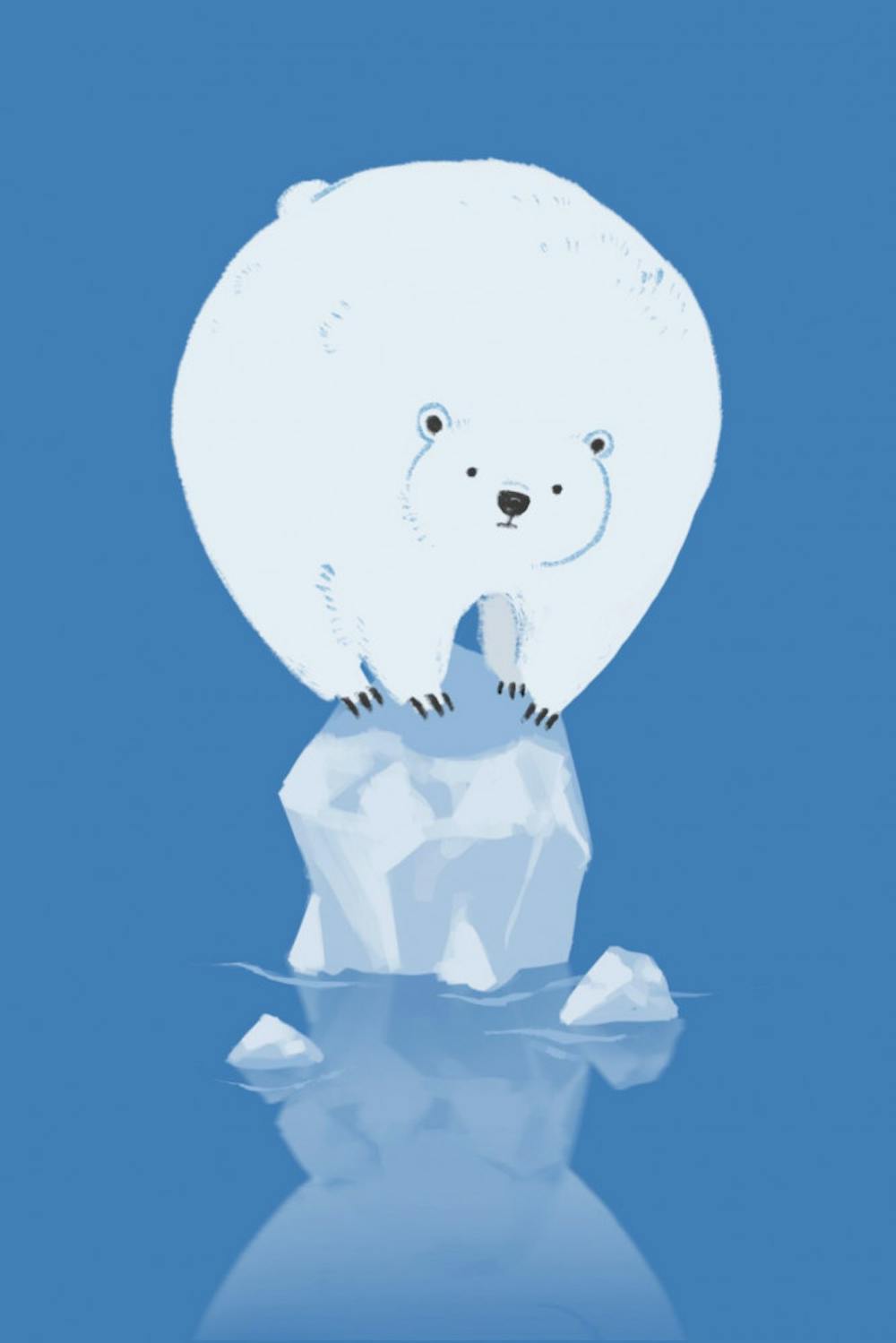A University study found that the location of the boundary between snow-covered ice and bare ice is the leading factor determining icemelt in Greenland, which is the largest contributor to global sea level rise.
A team of University researchers mapped the migration of Greenland’s snowline and its effect on the island’s icemelt using thousands of images from NASA’s Terra satellite. In a paper published this month, their results show how Greenland’s icemelt is primarily caused by snowline migration, a phenomenon that has been historically underrepresented in the literature.
A snowline, in this context, is the physical boundary between bright snow and dark ice. The snow on an ice sheet acts as a protective covering due to its reflective capacity and is characterized as having “high albedo,” said Jonathan Ryan, the paper’s lead author and a postdoctoral researcher at the Institute at Brown for Environment and Society. Snow reflects 70-80 percent of the solar energy that hits its surface. Ice only reflects 20-50 percent of this energy, leaving it more vulnerable to melt.
“As you progress through the summer season, the sun rises to higher angles and so you actually melt some snow … (exposing) bare glacial ice,” Ryan said.
“Unbelievably, no one had looked at snowlines of Greenland before. There has been a great deal of attention paid to other properties that darken the ice sheets’ surface — like dust, algae (and) meltwater pools. They have received a lot of study and a lot of media attention. This study shows, for the first time, that the humble snowline actually controls icemelt five times more than all of those other processes combined,” explained Visiting Professor of Earth, Environmental and Planetary Sciences Laurence Smith, the paper’s co-author.
The team’s research, which required analyzing roughly 3,000 images, was made possible using an automated approach. “It’s impossible for a person to go in and classify every pixel,” Ryan said. The researchers used a classification algorithm to track how Greenland’s snowline migrated in images taken over the past decade. They trained the algorithm to recognize images of snow against images of bare ice.
Ryan’s research specialty is understanding how Greenland’s ice sheet is melting and how it might respond to future climate change. He explained how he came about this project, in part, by spending time on Greenland’s ice sheet. “We saw in person how dark the ice is, how light the snow is and how fast the snowline migrates.”
Despite the fact that he was inspired by his time on the ice sheet, Ryan estimates that he spent 95 percent of his time working on this project from his desk. “This is actually one of the first projects where it has been almost completely done on computers, because I’m using satellite imagery.”
This study could improve climate modeling algorithms, which currently struggle to accurately predict snowline migration. “To predict snowline, you need two things. You need to know how much snow has fallen in the winter, and how much snow is melting during the summer. I have a feeling that models are not getting snowfall right, which throws off their modeling of snowline movement,” Ryan said.
Elizabeth Thomas PhD ‘14, who did not participate in this study, is a paleoclimatologist who works closely with climate models by helping ice sheet modelers understand how ice sheets have changed over time. There are always unaccounted-for processes that models fail to incorporate, she said. “We just might not quite have the physics right in the models.”
Ryan hopes to use the data from this research to understand why climate models tend to over and under predict the amount of snowfall in Greenland. “Hopefully our observation will help constrain the models’ predictions of actual snowfall, in the future.”
These researchers intentionally avoided making connections between this project and the larger discussion of climate change in their paper. Climate change “is sort of a contentious issue. What is interesting is that we didn’t really find a trend between 2000 and 2018, which shows that natural variability is responsible for a lot of the changes we’re seeing right now. The climate change signal is very subtle,” Ryan said.
Despite this signal being “subtle,” these researchers concluded that they reasonably expect icemelt in Greenland to intensify in the future. “We found that because the slope of the ice sheet flattens out as you go to higher elevations, it is likely that future snowline rises in elevation will create larger areas of bare ice exposure.” If the snowline reaches a higher and therefore flatter elevation, it would expose more bare ice, which is more susceptible to melt since it lacks protective snow cover. “This means that some parts of the ice sheet may experience 30 percent to 50 percent more melting in the future, simply due to this topographic effect,” Smith said. This is a significant finding, considering that the melting of Greenland’s ice sheet plays a key role in global sea level rise.
Beyond improving current climate models, these researchers hope to spark interest among scientists about studying the “humble” snowline. “This study has shown just how important the partitioning between bare ice and snow truly is,” Smith said.
Thomas echoed these thoughts, adding, “This sort of work is really exploding on Greenland. There is a lot more observation that we’re making on ice sheets these days.”





